
A-1J Skyraider
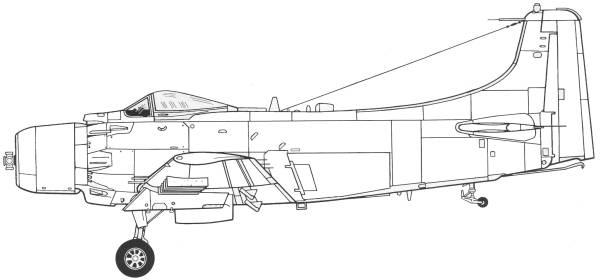
The Douglas Skyraider was designed during World War II to meet United States Navy requirements for a carrier-based, single-seat, long-range, high performance dive/torpedo bomber, to follow-on from earlier types such as the Helldiver and Avenger. Designed by Ed Heinemann of the Douglas Aircraft Company, prototypes were ordered on 6 July 1944 as the XBT2D-1. The XBT2D-1 made its first flight on 18 March 1945 and in April 1945, the USN began evaluation of the aircraft at the Naval Air Test Center. In December 1946, after a designation change to AD-1, delivery of the first production aircraft to a fleet squadron was made to VA-19A.
The Skyraider went through seven versions, starting with the AD-1, then AD-2 and AD-3 with various minor improvements, then the AD-4 with a more powerful R-3350-26WA engine. The AD-5 was significantly widened, allowing two crew to sit side-by-side (this was not the first multiple-crew variant, the AD-1Q being a two-seater and the AD-3N a three-seater); it also came in a four-seat night-attack version, the AD-5N. The AD-6 was an improved AD-4B with improved low-level bombing equipment, and the final production version AD-7 was upgraded to a R-3350-26WB engine.
For service in Vietnam, USAF Skyraiders were fitted with the Stanley Yankee extraction system, which acted in a similar manner to an ejection seat, though with a twin rocket pulling the escaping pilot from the cockpit.
In addition to serving during Korea and Vietnam as an attack aircraft, the Skyraider was modified to serve as a carrier-based airborne early warning aircraft, replacing the Grumman TBM-3W Avenger. It fulfilled this function in the USN and Royal Navy, being replaced by the Grumman E-1 Tracer and Fairey Gannet, respectively, in those services.
Skyraider production ended in 1957 with a total of 3,180 having been built. In 1962, the existing Skyraiders were re-designated A-1D through A-1J and later used by both the USAF and the Navy in the Vietnam War.
The Kit
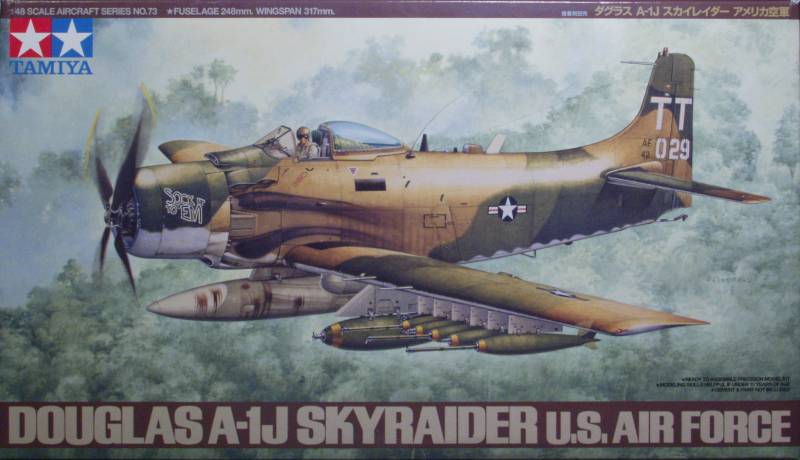
The Tamiya kit comes in a top opening tray type box with attractive artwork on the top. Inside the box there are five bags containing the kit sprues. Three bags have just one sprue, one has two and another as four. The sprue with the fuselage halves is in a bag by itself, the two sprues with the wings are bagged together. The sprue with the engine, cowling and prop is bagged by itself as are the clear parts and the bag with four sprues has two each of duplicate sprues with under wing armaments and other pieces of which there are two of. While it would be nice to see each sprue individually bagged at least the ones most likely to suffer scuffing damage during shipment are relatively protected.
The parts are molded in a light gray plastic. The finish is smooth and detail is a combination of fine recessed panel lines and rivets as well as raised detail where applicable. Ejector pin marks are mostly in places that will not be seen. I did not find any surface defects on any of the air frame parts. Flash is all but non existent and mold separation line are light.
The cockpit detail is sufficient to suit most modelers and a reasonably nice figure is provided for those so inclined. There is a decal supplied for the instrument panel. The engine is a one piece casting with adequate detail considering how much of it will be seen. Options are provided for open or close engine cooling flaps which fit in front of the engine so with them closed you won't see the engine at all. The main gear bays have a nice level of detail and sides are molded integral with the gear doors which make these nice and sturdy and eliminates the hassle of trying to get them mounted at the correct angle. The down side is that they will invariably be in the way during the finishing stage and sticking out where they can easily be broken off during handling. All of the control surfaces are molded in the neutral position with the exception of the flaps which can be mounted up or down. The ventral and side speed brakes can be mounted open or closed. A good assortment of under wing armaments are supplied, Mk 82 bombs with and without extended fuses, LAU rocket pods. SUU-11 gun pods, M117 bombs, LAU-3 rocket pods and SUU-14 rocket tubes. Two diagrams in the instructions provide typical load out configurations. Sprue shots are shown below...


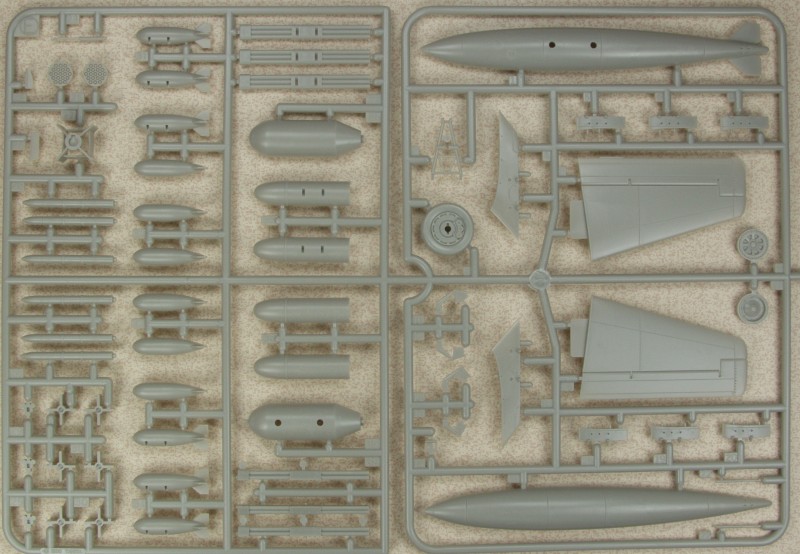

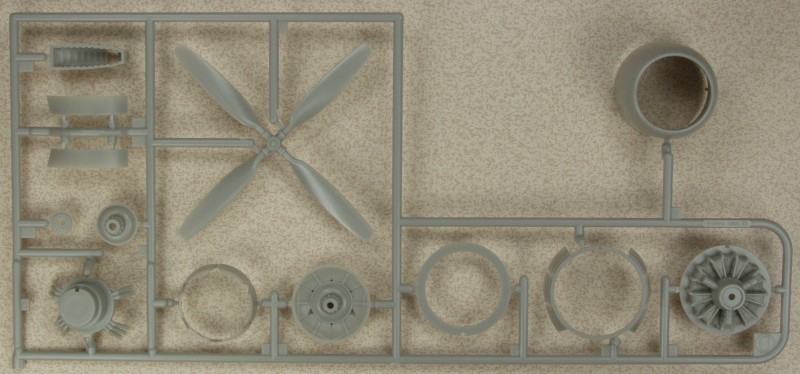
The clear parts are crystal clear and reasonably thin.
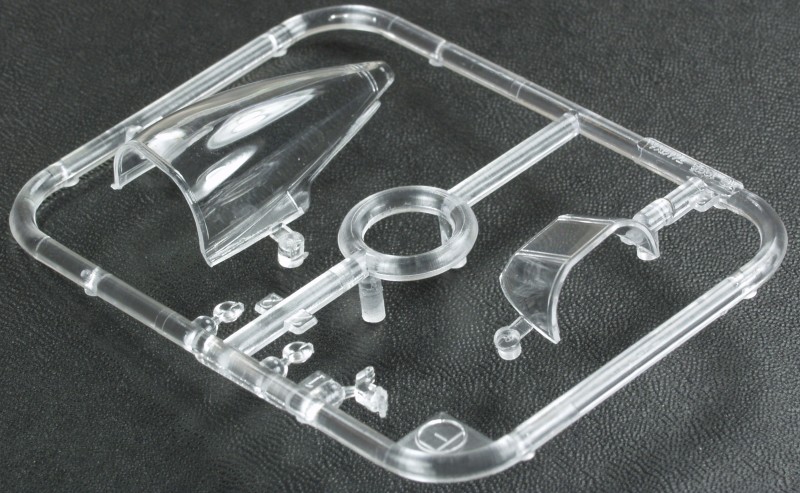
The decals look typical Tamiya in that they appear to be thick. Most of them are in register but a couple of the smaller ejection seat decals are off. The instrument panel is supplied as are decals for the propeller tip markings in yellow or red and white. They will most likely require setting solution to settle well over the surface detail. Marking are provided for two aircraft, both from the 56th Special operations wing, 602nd Fighter squadron. The major difference between them being the tail number and one has black under surfaces and the other gray.
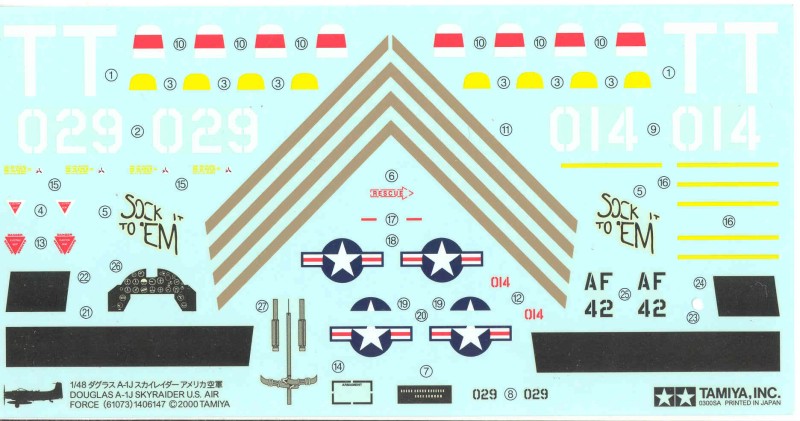
The instructions are typical Tamiya, A4 size panels folded accordion style. The first page has historical info in 4 languages, the second a color chart showing tamiya paint numbers and the usual safety warnings followed by multiple pages with 18 assembly steps. There is no parts map. The decal and painting instructions are on a separate sheet and a second sheet is provided with a full size print that could be cut out and used for masking.
After Market Goodies
I bought the Eduard Zoom set mostly for the instrument panel and seat belts and harnesses.
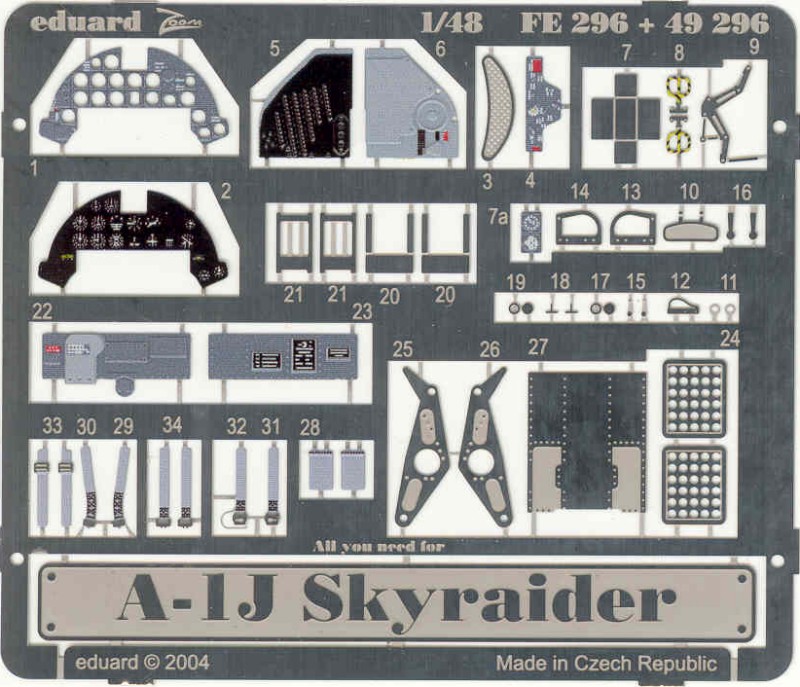
The kit was purchased second hand and the previous owner had acquired the True Details wheel set shown below. Other than being weighted I'm not sure they are that much of an improvement over the kit supplied parts.
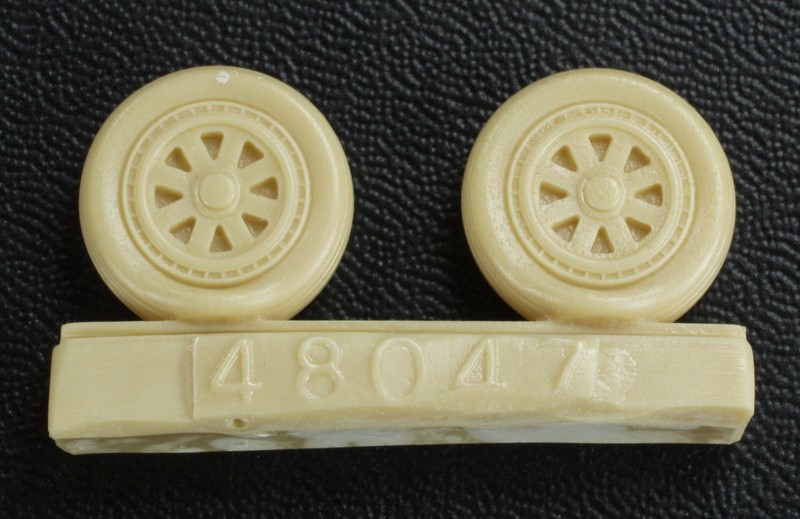
Also with the kit was a CMK cockpit set. I'm not yet sure if I'll use it, a lot will depend of how much of a fit hassle it will be. It came with the PE shown below and a vacuformed canopy which had already yellowed so I did not show it. The parts are nicely cast with no obvious defects.
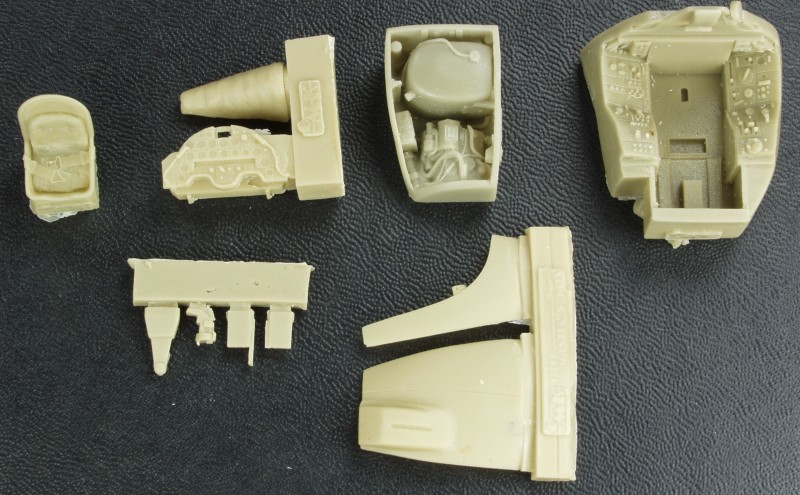
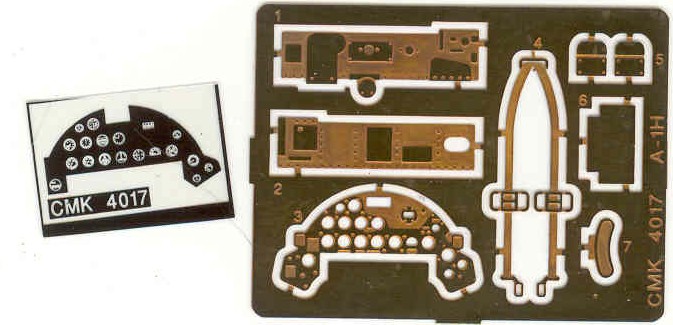
Conclusions
This is a typical Tamiya kit from the period it was produced, around 2000, and it has held up well detail wise and should go together without any issues. recommended for modelers of most skill levels.
Links to kit build or reviews
Build reviews can be found here and here
References
A-1 Skyraider Walk Around by Ed Barthelmes and Richard S. Dann
Back to the Misc 1/48 U.S. Page